
Space Tourism Pilot Training – With the dawn of the commercial spaceflight era, an exciting career beckons for those dreaming of navigating the final frontier as space tourism pilots. Companies like Virgin Galactic, SpaceX, and Blue Origin are leading the charge into suborbital and, potentially, orbital space tourism, transforming science fiction into reality. For aspirants looking to pilot these cutting-edge spacecraft, the journey begins with rigorous and specialised training, designed to ensure both the safety of tourists and the success of missions.
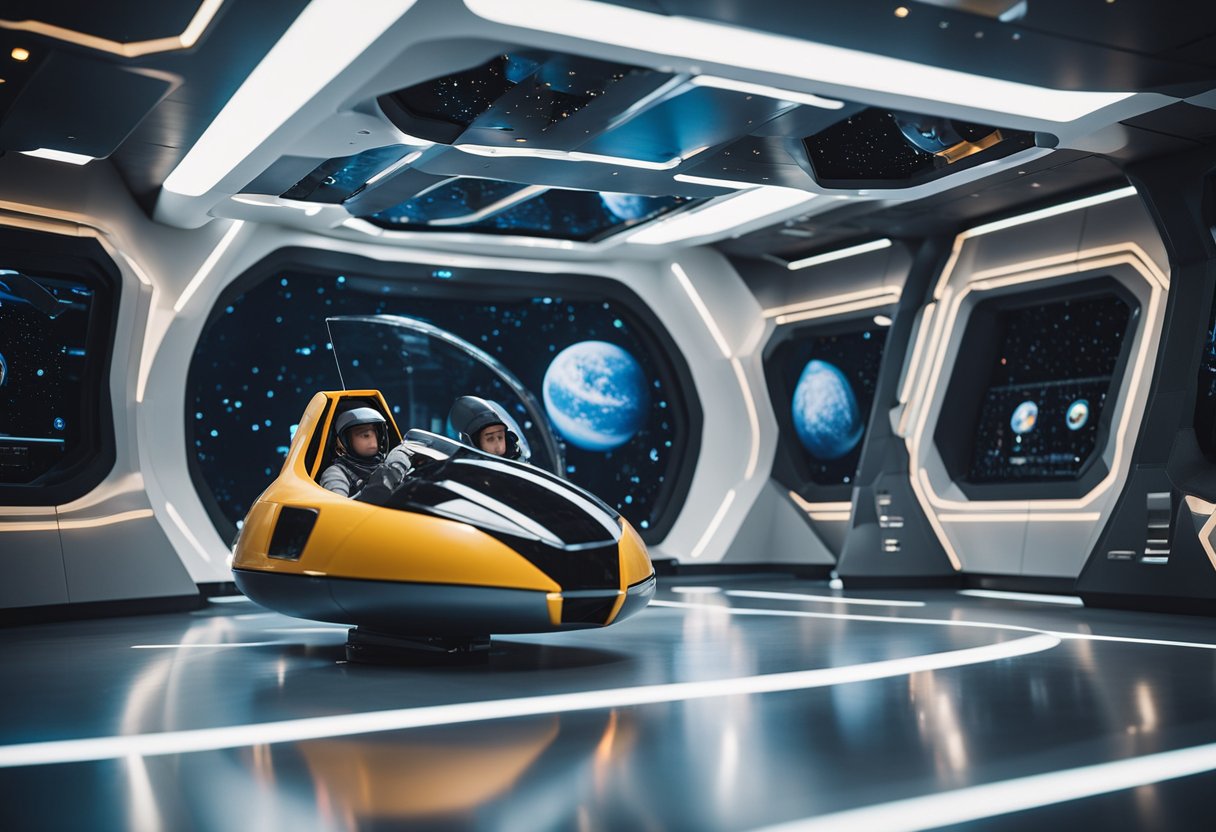
To qualify as a space tourist pilot, candidates must undertake a comprehensive training programme that equips them with the skills to handle high-performance space vehicles and the various scenarios they may encounter beyond Earth’s atmosphere. Integral to this programme is developing a detailed knowledge of spacecraft systems and technologies, acquiring the ability to manage psychological stress under extreme conditions, and understanding the robust legal frameworks governing space activity. Pilots must also maintain an impeccable standard of health and fitness to withstand the rigours of space travel.
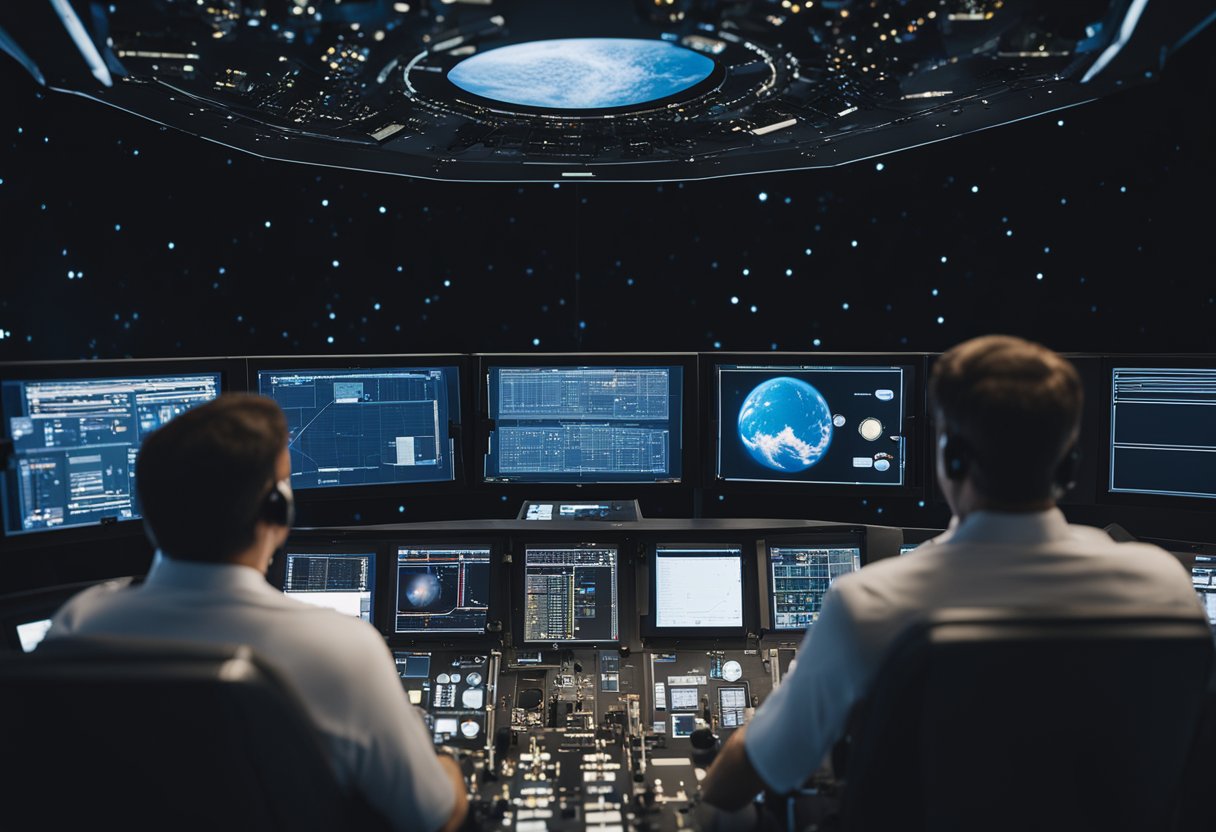
The history of space tourism is a unique chronicle of human aspiration meeting technological achievement. It highlights our collective efforts to transcend terrestrial boundaries and allows private individuals to experience the realm of space.
The domain of space was once the exclusive preserve of government astronauts. However, in the year 2001, Dennis Tito, an American entrepreneur, shifted the paradigm by becoming the first self-funded space tourist. He travelled aboard a Russian Soyuz spacecraft to the International Space Station (ISS). This seminal journey not only paved the way for future space tourists but also demonstrated the feasibility of commercial space exploration.
Subsequently, Iranian-American entrepreneur Anousheh Ansari followed in Tito’s footsteps. In 2006, she became the first female space tourist and the first person of Iranian descent to reach space. Her expedition to the ISS was also significant for being partly funded through the winnings from the Ansari X Prize, a competition she sponsored to incite innovation in the arena of private spaceflight.
In the wake of these groundbreaking missions, space tourism has seen continuous advancements. The Ansari X Prize itself played a pivotal role in stimulating the commercial space travel sector. The prize was awarded in 2004 to the developers of SpaceShipOne, the first privately funded spacecraft to enter space twice within two weeks. This event signalled the beginning of a new era, where commercial ventures could aspire to ferry tourists beyond Earth.
As we chronicle space tourism’s progress on platforms like SpaceVoyageVentures.com, it’s clear that we stand on the brink of a new epoch. Innovations in spacecraft design and the advent of private spaceflight companies are making access to space more attainable. With each passing year, the prospect of widespread space tourism inches closer, and the number of individuals who have ventured into space continues to grow. We witness a burgeoning industry where once-limiting factors like cost and technology are being surmounted, bringing the vastness of the cosmos within our collective reach.
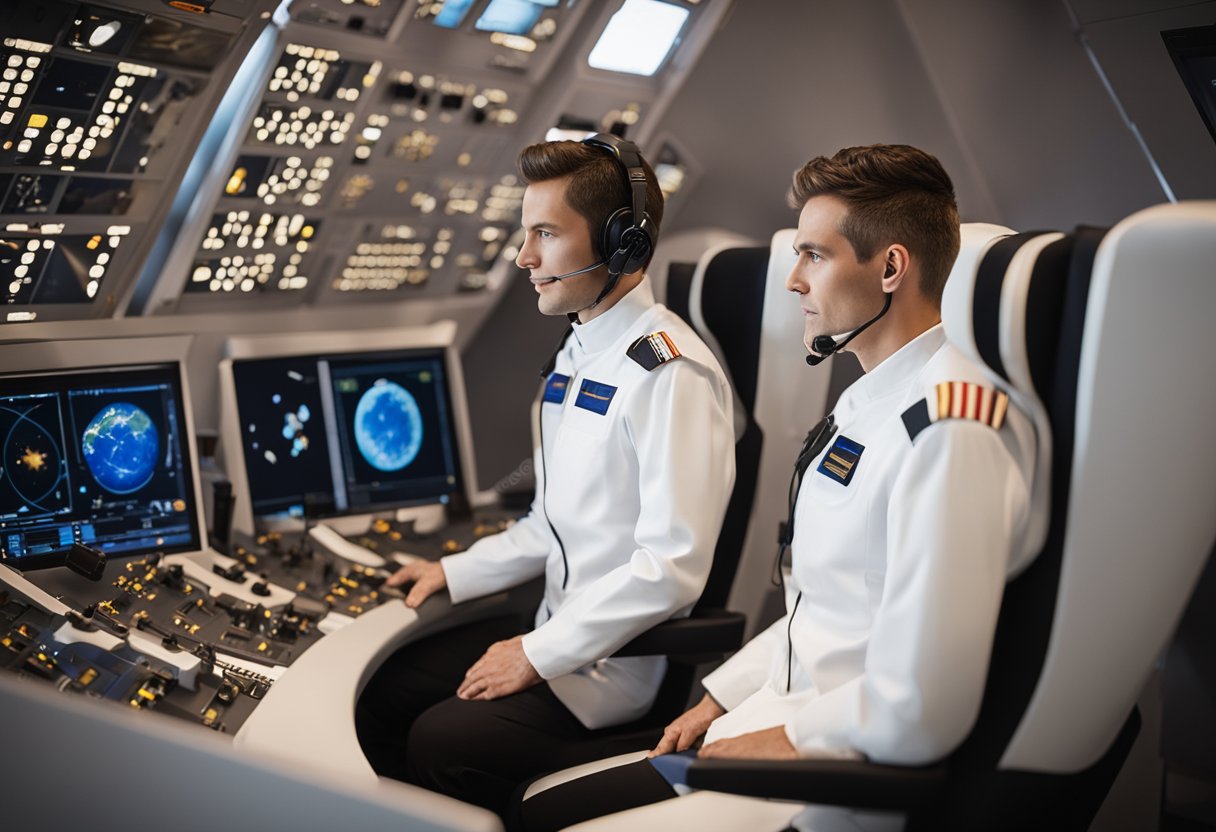
In an era where space tourism is transitioning from a visionary concept to a tangible reality, the qualifications for pilots within this pioneering industry are both stringent and multifaceted. We’ll examine the specific criteria that aspiring space pilots must meet, from federal aviation regulations to the depth of their aerospace knowledge and flight experience.
The Federal Aviation Administration (FAA) sets the bar for piloting qualifications in the realm of space tourism. Candidates must possess an FAA-recognised commercial pilot licence with an instrument rating. Furthermore, they are required to have a second-class medical certificate at minimum. Integral to the training is an understanding of the physiological effects of space flight, covered in courses provided by institutions like the National Aerospace Training and Research (NASTAR) Center.
Aspiring space tourism pilots often come from an extensive educational background in engineering or a related field. A bachelor’s degree in aerospace engineering, mechanical engineering, or even astrophysics lays a solid foundation for understanding the complexities of spacecraft systems and navigation. Coursework in these programmes includes, but is not limited to, thermodynamics, fluid dynamics, and control systems.
Prior professional experience as a pilot is essential, with a strong preference for those who have served as fighter pilots or test pilots. Such backgrounds provide the high-stress, reactive flying experience necessary for the quick decision-making required in space flight. Moreover, those with astronaut training or experience bring an invaluable skill set to the role, as they are already adept at operating in the rigours of outer space. Our explorations at SpaceVoyageVentures.com reveal a growing interest in candidates who not only have technical aptitude but also the ability to lead missions with poise and precision.
Before we venture into the details of the training programmes necessary for space tourism pilots, it is crucial to acknowledge the comprehensive nature of these curricula. They are developed to instil a deep understanding of spacecraft technology, ensuring safety is paramount, and they encompass both basic and advanced skill sets required to handle the unique challenges of spaceflight.
Our Basic Training Modules focus on foundational knowledge and essential skills. Trainees first gain a fundamental grasp of aerospace principles, including the dynamics of flight beyond Earth’s atmosphere. We employ state-of-the-art simulations to introduce pilots to basic spacecraft technology. Additionally, integration with NASA‘s established guidelines ensures a robust standard of training.
As pilots progress, we delve into Advanced Spacecraft Handling, where complex manoeuvres and systems management are at the fore. Our training includes operating high-fidelity simulators that replicate the latest spacecraft technology. Skill mastery in this domain is critical, as it encompasses reacting to dynamic spatial conditions and executing precise flight paths.
In the Emergency Protocols section, the focus shifts to preparing pilots for unlikely but possible scenarios. We leverage our facilities, including a centrifuge, to replicate intense G-forces and other physical stressors. By practising these emergency drills, pilots develop a calm, methodical approach to resolving urgent issues while prioritising crew and passenger safety.
Through rigorous training programmes, we ensure that future space tourism pilots are well-equipped to confidently commandeer spacecraft into the next frontier of travel, as discussed on early adopter platforms such as SpaceVoyageVentures.com.
Before aspiring space tourism pilots can take the helm of a spacecraft, we must carefully consider the stringent health and physical requirements essential for this role. Pilots will face unique challenges, including weightlessness, which can have profound effects on the human body.
To ascertain whether candidates are fit for duty in space, a comprehensive evaluation of their physical fitness is imperative. Initially, we conduct an intense physical examination focusing on:
Once certified fit, pilots commit to continuous health monitoring. Key aspects include:
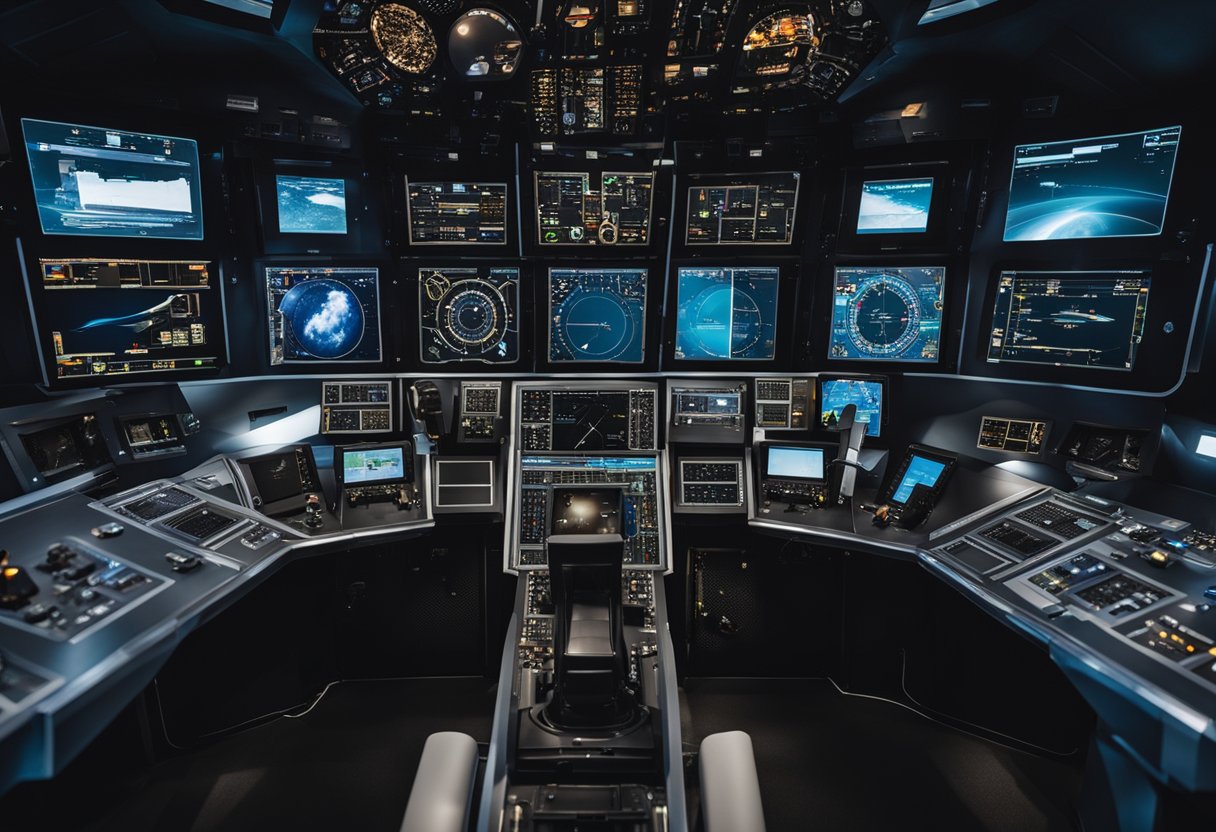
Space tourism pilots serve as the linchpin to the customer experience, taking on critical duties and ensuring a high level of interaction with space tourists during flights. They blend technical expertise with charismatic leadership to elevate the journey into space.
Pilots in the space tourism industry are tasked with more than just operating the spacecraft. Their responsibilities include:
These duties underscore the pilot’s pivotal role in guaranteeing a safe and memorable trip for passengers.
Interacting with space tourists is integral to the pilot’s role, with the goal of enhancing the overall customer experience. Pilots are encouraged to:
A charismatic pilot who can communicate effectively is vital in fostering a positive atmosphere, contributing to the success of the space tourism venture.
For an in-depth exploration of this bourgeoning industry, visit SpaceVoyageVentures.com, where we document the evolution of cosmic travel, from conceptual trips to current and forthcoming real-world experiences.
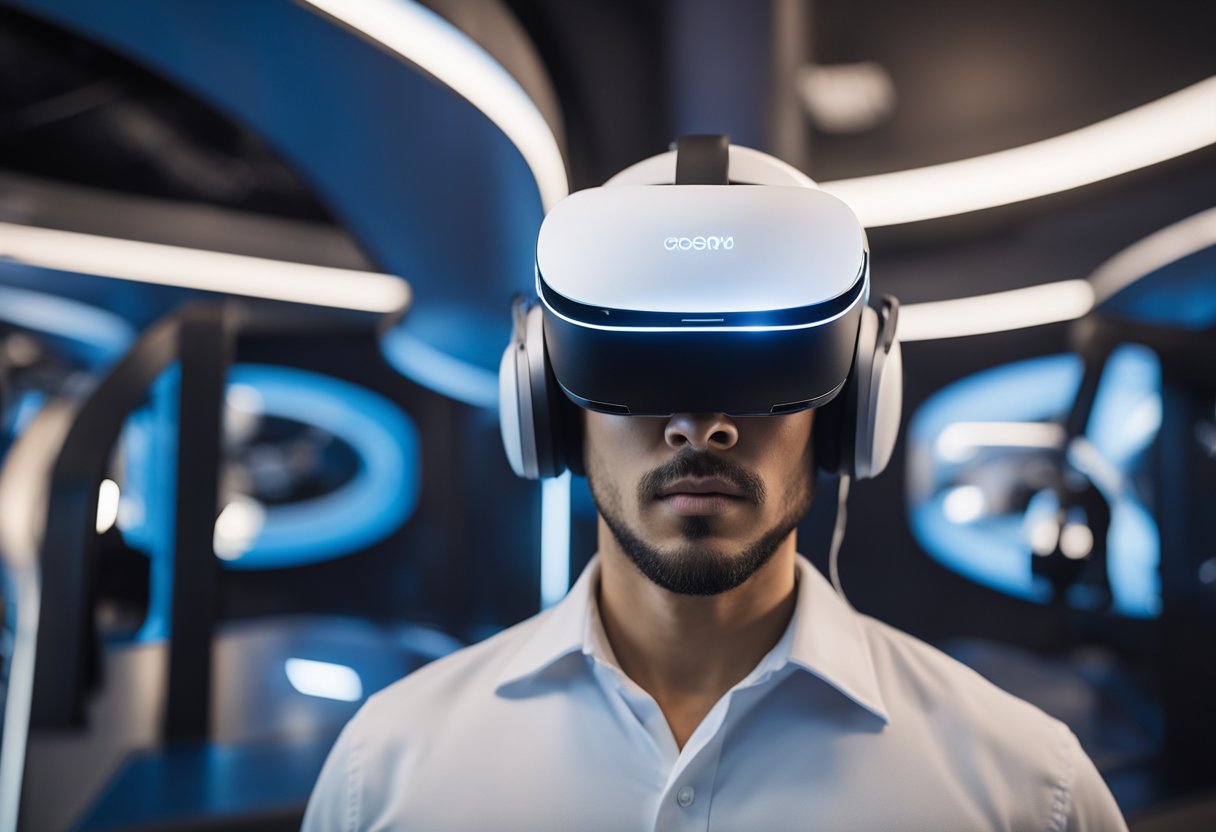
In preparing for space tourism, we emphasise the importance of psychological training and effective stress management techniques to ensure spaceflight participants (SFPs) maintain stress stability during high-pressure situations and demonstrate rational thinking amidst the psychological aspects of space travel.
When confronted with the unique challenges of space, it becomes imperative for SFPs to possess the ability to cope with high-pressure situations. Training provided by organisations, reminiscent of the programmes described in an integrative review, covers various scenarios that might occur during spaceflight. This training includes simulated emergency response exercises, which bolster an individual’s confidence and readiness. By routinely practising these high-stakes drills, SFPs develop the necessary stress resilience and stability that are critical to successful missions.
Developing rational thinking skills is another cornerstone of our training modules. SFPs need to respond to technical challenges with precision and deliberate thought. By engaging in problem-solving activities that have been modelled on real aerospace situations, as noted by resources like NASA’s behavioural health and performance report, pilots and participants refine their abilities to process information methodically and react according to best practices. This preparation is key to maintaining safety and mission integrity under the psychological pressures of space travel.
By addressing these aspects through rigorous training, space tourism pilots and participants on programmes like those featured on SpaceVoyageVentures.com not only enhance their mission performance but also enrich their overall space journey.
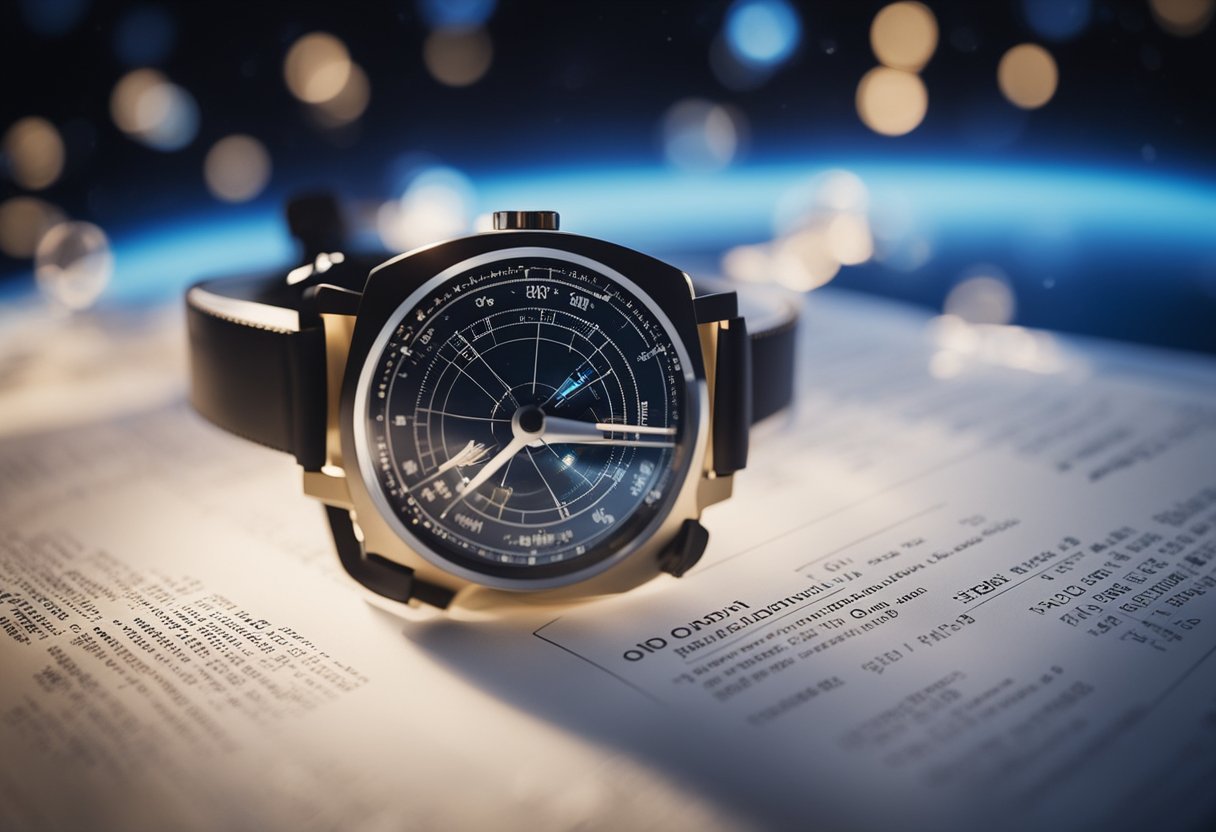
In our exploration of space tourism pilot training, it’s imperative to understand the legal intricacies that underpin this burgeoning industry. Regulations are crucial to ensure the safety and sustainability of space tourism ventures.
The Federal Aviation Administration (FAA), particularly through its Office of Commercial Space Transportation, is responsible for the regulation of non-governmental spaceflight in the United States. Our pilots are required to comply with FAA regulations which are in place to ensure their safety and that of the passengers. These regulations extend to the licensing of pilots and spacecraft, an alignment with international laws to manage the shared domain of space. Steps must be taken to adhere to the Outer Space Treaty, a framework that forms the basis for international space law, emphasising that the use of outer space shall be carried out for the benefit of all countries.
When discussing the regulatory environment of commercial spaceflight, safety and environmental standards are paramount. Not only must flight operations meet stringent safety protocols to protect lives, but measures must also be taken to minimise environmental pollution. Spacecraft launches contribute to atmospheric pollution, hence international standards are in place to mitigate these effects. We ensure our pilot training programmes incorporate comprehensive safety training to surpass these standards, preparing them for the existing and emerging risks associated with space tourism.
Ensuring compliance with regulations and continuous dedication to high safety and environmental standards is a cornerstone of our commitment at SpaceVoyageVentures.com.
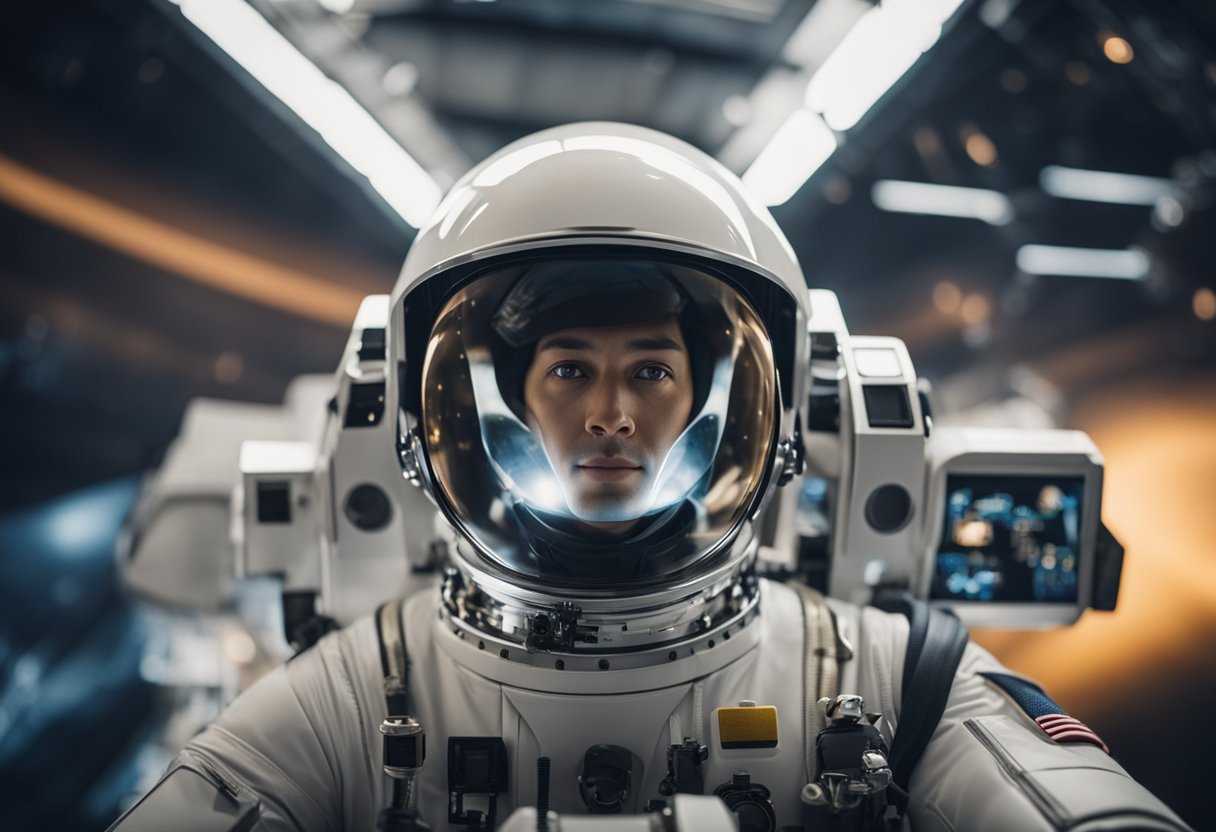
In this section, we explore the intricate features and navigational systems of cutting-edge spacecraft designed for space tourism. Our focus will include notable vehicles like SpaceShipTwo and New Shepard, which are paving the way for civilian space travel.
SpaceShipTwo, pioneered by Virgin Galactic, boasts a unique air-launched design. Its architecture allows for a reusable suborbital spaceplane that can cater to six passengers and two pilots. The craft is equipped with versatile wings that facilitate controlled re-entry and a feathering system to enhance stability during descent. Space tourism demands advanced safety measures, and SpaceShipTwo addresses this with rigorous testing and pilot training.
New Shepard, developed by Blue Origin, is a rocket system named in honour of the first American in space. It is designed to take astronauts and research payloads past the Kármán line – the recognised boundary of space. The capsule features large windows, providing passengers with breathtaking views, and its design focuses on a vertical takeoff and landing system, enabling multiple flights with minimal refurbishment between missions.
Spacecraft technology has evolved to include sophisticated navigational systems that ensure precise control and safety during spaceflights. Both SpaceShipTwo and New Shepard are equipped with state-of-the-art avionics that enable pilots to navigate through the demanding environment of space. An intuitive cockpit display feeds real-time data to the pilots, aiding them in manoeuvres and pathway adjustments throughout the flight.
The technology also includes redundancy to safeguard against any single-point system failures. These advances reflect our dedication to not just achieving a space-worthy craft but also ensuring the utmost safety and reliability for our space tourists as we embark on these groundbreaking journeys. For an expansive look into the possibilities of these and other space tours, explore SpaceVoyageVentures.com.
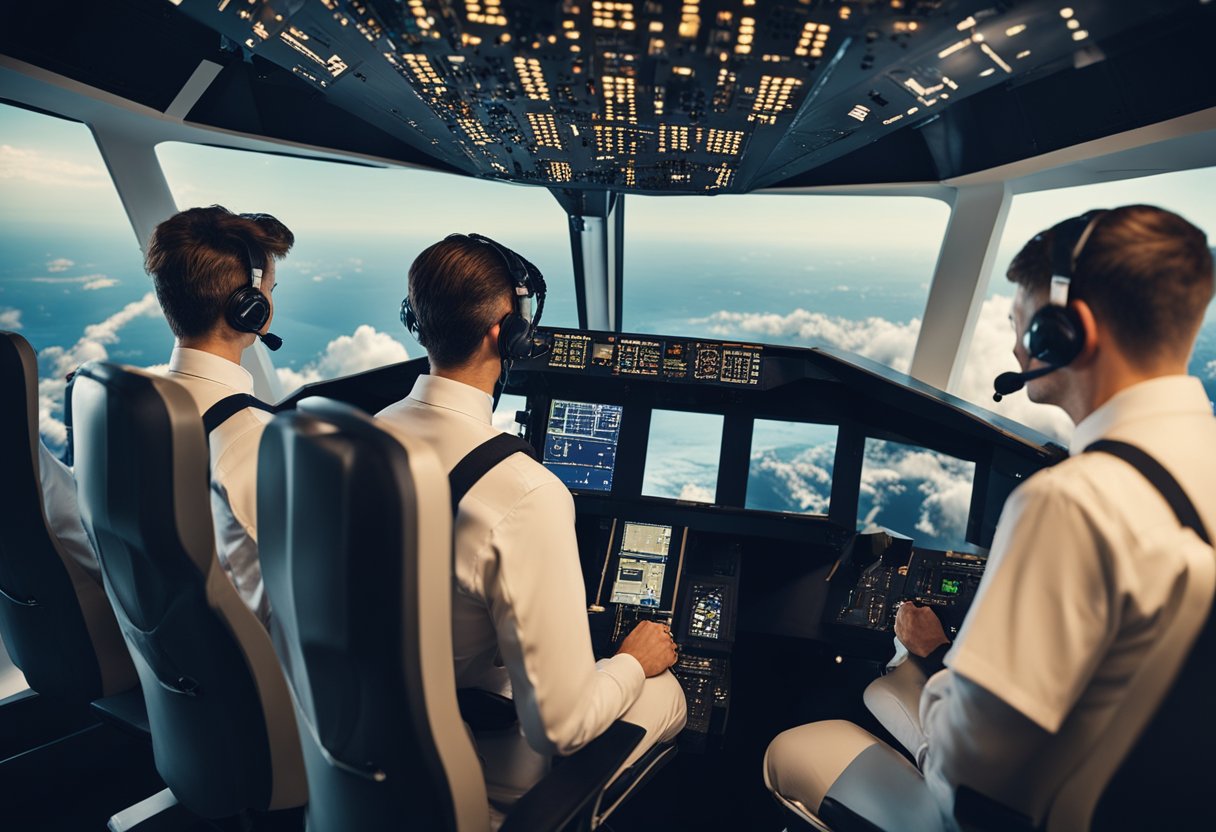
The evolution of space tourism is reshaping the space economy, with market growth and business plans progressively unfolding in this nascent sector. Here, we shall specifically explore the economic landscape, market valuation, and the business strategies that are steering this industry.
Investigations into the Space Tourism Market signal a significant upward trajectory. Analysts from Grand View Research highlight that in 2023, the industry was valued at USD 851.4 million, with a forecast compound annual growth rate (CAGR) of 49.9% leading up to 2030. The factors fuelling this growth range from technological advancements to an increased appetite for adventure among high net-worth individuals, who are exhibiting a willingness to partake in spaceflight. Concurrently, our website, SpaceVoyageVentures.com, delineates both current and forthcoming space travel opportunities, serving as a gateway for enthusiasts to gauge the market’s pulse.
Foraying into the domain of ****space travel necessitates comprehensive business plans that address market opportunities and limitations. We recognise that successful space ventures mandate robust frameworks that incorporate spacecraft technology, customer motivation, demand analysis, and the strategic sourcing of pilots with the right qualifications. While business models are diverse, the essence lies in crafting a plan that is adaptive to market needs and regulatory frameworks. Growth in the sector may benefit from the provision of competitive pay and benefits to attract skillful talent essential for sustaining operational excellence.
In summation, the space tourism industry sits at the cusp of a great leap, driven by market forces and strategic business planning. Our explorations in this field endeavour to provide clarity and guidance as we venture into this commercial spaceflight epoch.
As we look towards the horizon of space travel, we observe a focus on the longevity and reach of space tourism. Efforts concentrate on how to sustainably conduct tours outside our atmosphere while also extending the trips beyond quick suborbital jaunts. The key to unlocking these prospects lies in responsible development and technological advances.
Our engagement with space tourism must be underpinned by sustainability. With figures like Elon Musk championing eco-friendly rocket designs, we find that sustainability pervades every aspect from launch systems to habitats. The reduction of space debris and the preservation of nature in space are crucial. For instance, SpaceX’s reusable rockets are a step towards less wasteful missions. Meanwhile, organisations such as SpaceVoyageVentures.com outline paths for sustainable tourism that respect the pristine nature of space and place great emphasis on environmental stewardship.
Our ambitions don’t end with sustainable designs; we aim to push the boundaries of space travel further. Suborbital flights are just the beginning; we are setting our sights on achieving orbit and reaching the Moon. This expansion necessitates rigorous pilot training, advanced technologies, and a clear understanding of the risks and rewards. As space tourism matures, we anticipate a variety of destinations becoming available, potentially including lunar landings or contributions to orbital infrastructures. These eventualities will be recorded and anticipated at sites like SpaceVoyageVentures.com, ensuring an informed community of future space tourists.
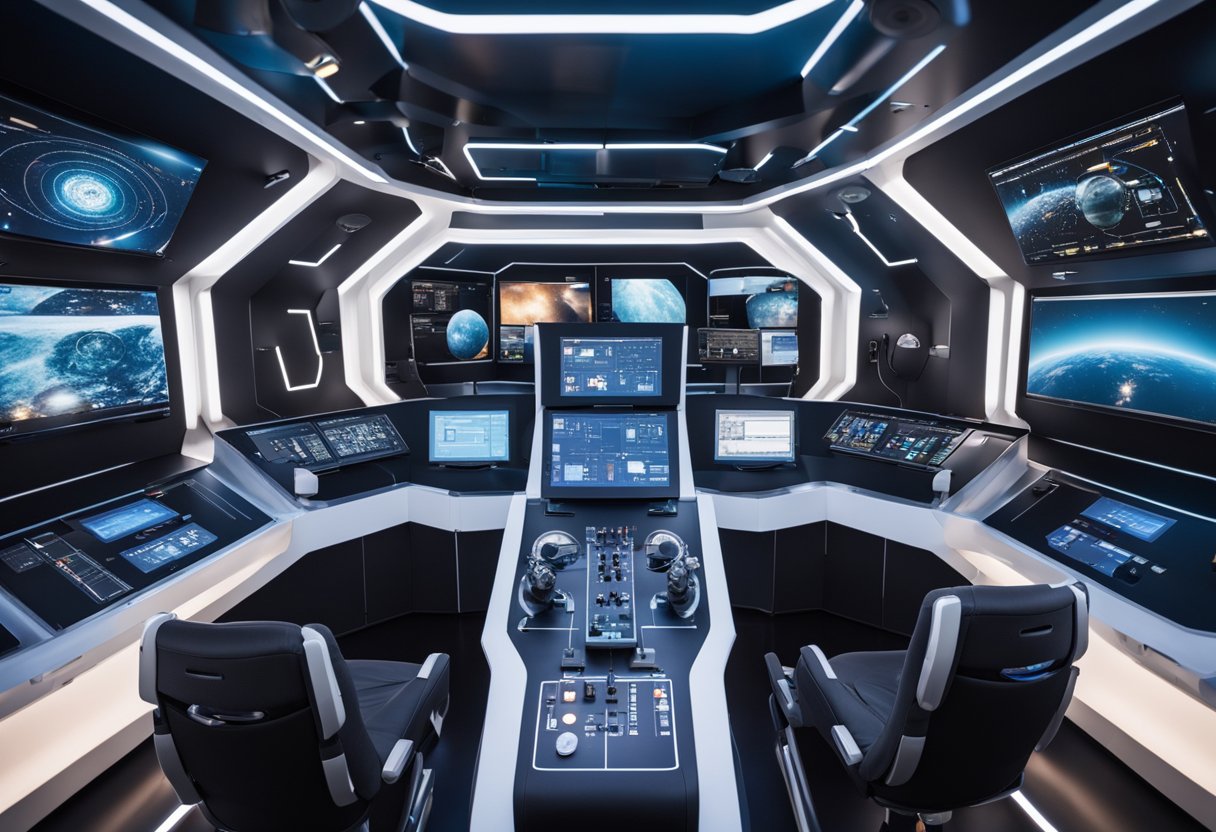
In our detailed exploration of space tourism pilot training, we encounter many enquiries from eager learners. These questions range from basic prerequisites to the intensity of astronaut training for civilians. Let’s address the most common ones.
To pursue a career as a space tourism pilot, one must typically have a combination of extensive flight experience, often including time as a pilot-in-command in jet aircraft, and a deep understanding of aerospace technology. Rigorous training and certification similar to that required for commercial pilots are also essential. A minimum of a master’s degree in STEM fields such as science or engineering is often required, as detailed by NASA’s astronaut selection criteria.
Astronaut training for civilians, who aspire to become space tourists, encompasses a multitude of simulations to prepare for the unique conditions of spaceflight. This includes experiencing zero-gravity environments, undergoing high-G manoeuvres, and familiarising oneself with the spacecraft operations. Participants receive practical education to ensure they can handle emergencies and understand the science behind space travel.
G-force training is vital for acclimatising space tourists to the intense gravitational forces experienced during launch and re-entry. This training takes place in centrifuges that simulate the conditions expected in space and helps in building tolerance and understanding how to cope with the physical demands of spaceflight.
Certainly, private institutions like the National Aerospace Training and Research Centre offer rigorous spaceflight training for future space tourists. These centres are equipped with advanced equipment such as centrifuges for G-force training, providing comprehensive preparation for commercial spaceflight experiences.
Yes, space tourism aspirants must meet specific medical standards to participate in pilot programmes. Medical fitness is paramount, as the strains of space travel can be taxing on one’s body. The requirements often include cardiovascular health checks, vision and hearing tests, and overall physical fitness assessments.
While a background in aerospace education is greatly beneficial, it is not a strict requirement for participation in space tourism. However, an understanding of key principles in aviation or space technology can enhance a participant’s training experience and ensure a deeper appreciation and comprehension of the journey they are undertaking.